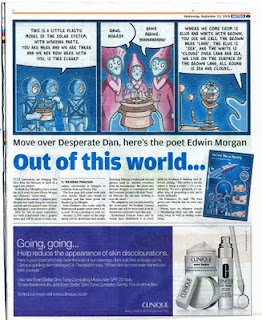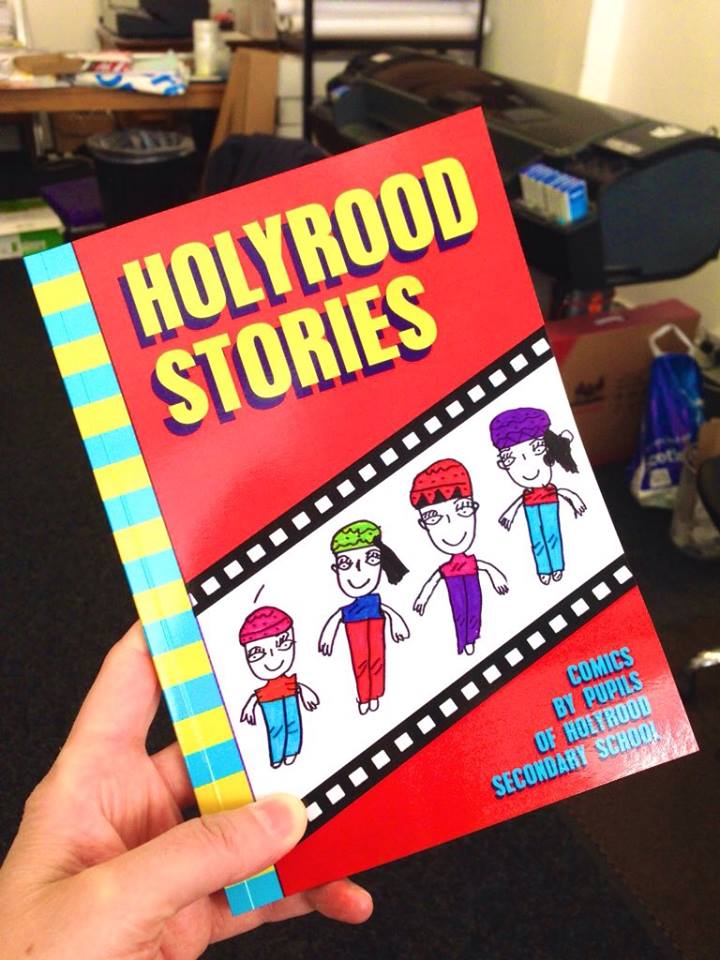Graphic Novels in the Classroom
It was an honour to be invited as keynote speakers at the National Literacy Network Meeting last week. We spoke to over 70 delegates, including representatives from local authorities, librarians and teachers, who had gathered for the day at Stirling University to discuss literacy and how to make reading more accessible. The day was organised by an incredibly dynamic team from Education Scotland, whom we’d like to thank. Our talk was broadcast live on the GLOW network and everyone in attendance received a signed copy of our Louis – Red Letter Day graphic novel.
So we started the day with a 40 minute talk: Comics in the Classroom. We discussed graphic novels, our own Louis books and the creative process, our author visits to schools and libraries and experiences with different age groups. It was great to have this opportunity to spread the word about comics and graphic novels and to encourage their use in education.
During the break we had the pleasure of discussing ideas further with several interested attendees, and it was remarked that some 10 years ago, we wouldn’t even have dreamt of comics being on the education agenda. But in recent years things have really changed, and more and more educators are recognising that comics are a great way to get the attention of the younger generations.
Indeed, as our culture has become increasingly visual, it is perhaps understandable that graphic novels have gained more attention. And recent years have seen a proliferation of comics, graphic novels and manga, with the boundaries of the medium being pushed ever further. Now there is a wide variety of work in different genres for young adults, adults and children. Graphic novel adaptations of plays, novels and novellas are increasingly being used in the classroom context.
Our comic adaptation of Edwin Morgan’s poem The First Men on Mercury, commissioned by ASLS, is widely used around the world in a variety of educational contexts. (A pdf version of the comic, and some teacher’s notes, can be downloaded free here.)
Comics are a great way to encourage children and young people to read – while some might see reading as a chore, they won’t think twice about reading a comic. And it’s not only because they don’t have as many words: they are a truly dynamic, versatile, and exciting medium which stimulates the mind. The interaction of words and pictures in rhythmic sequences takes reading to another level.
Whatever their age, children love to make their own comics, something we see first hand, without exception, every time we do workshops in schools.
Comics are great too for reluctant readers: we’ve been told by teachers that some pupils have written more during our workshops in the classroom, making their own comic, than in the entire year! They begin to overcome a barrier.
But of course comics aren’t just for kids and reluctant readers, and since our beginnings we have been striving to help erode preconceptions. Comics are an art form in their own right and can be as worthy as any piece of literature or work of art.
On this level, graphic novels can be used in further education, as a way to explore ideas and concepts such as aesthetics, design and philosophy. We had the pleasure recently of talking at the Advanced Higher Creative Writing Conference in Edinburgh to a group of really bright, sparkly and interested pupils, and also visited Glasgow School of Art to discuss comics and graphic novels with a group of interested students from a variety of educational backgrounds across the arts.








